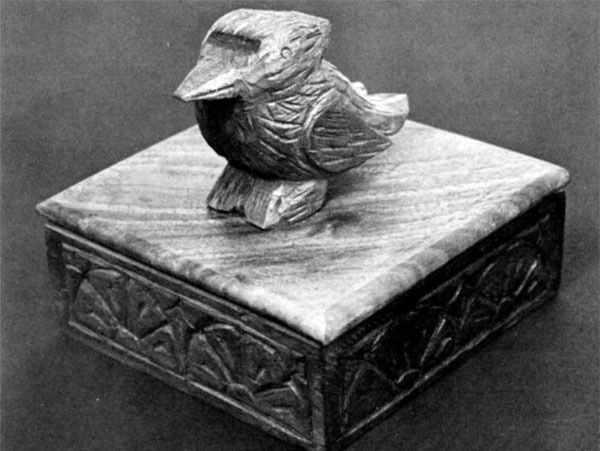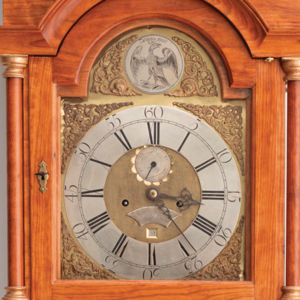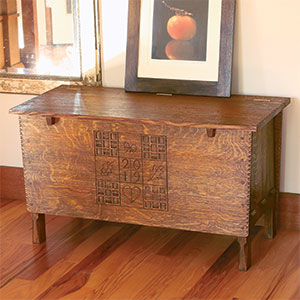Stamp Box
What happened when the old relic box reached America
Synopsis: Stanley D. Saperstein explains in this quick article how to make a relic box, or stamp box. Very few survive from before the Revolution, he says. They vary as to size and can be square or rectangular; the most common sizes were 3 in. square, 4 in. square, and 4 in. by 5 in. He describes the best woods to use, suggests carving the sides before taking the center out, and advises honeycombing the block to scoop out the center. Templates are included in the article.
The 17th Century stamp box is a little known antique in America, but widely known in Europe as a “relic box” to house prized religious relics. It makes a beautiful desk ornament.
Because the relics were quite small, something was needed to house them, and small decorative boxes were carved out to serve the purpose.
When the first Catholics arrived in Lord Baltimore’s Maryland colony, the relic box came along, but in America there were no relics to be sold and the pretty little boxes were soon being made by local craftsmen to house different types of colonial stamps. The stamp boxes seemed to disappear after the Revolution and very few survive.
The boxes varied as to size and could be square or rectangular. The most common sizes were three inches square, four inches square and four by five.
The best woods for this are walnut, mahogany and cherry. Pine may be used, but it tends to break easily. This one is made of walnut and the bird is a caricature of a tufted titmouse. Owls and titmice were considered good luck and were common on stamp boxes.
The box itself is made from one piece of wood (laminate if necessary) with the center scooped out. The easiest way to accomplish this is to honeycomb the center of the block with a drill. Remove the remaining wood with a gouge, and straighten the sides with a chisel.
Carve the outside of the box before you take the center out to avoid cracking the sides. If you wish, leave the sides plain. The 3/8-inch thick lid is rabbeted to fit into the center block. To make the bird, use the pattern provided or preferably create your own —any small bird will do, in a caricature style. Don’t paint the bird; give it a natural finish and fasten it to the lid with glue or a screw.
From Fine Woodworking #1
For the full article, download the PDF below:
Fine Woodworking Recommended Products

Festool DF 500 Q-Set Domino Joiner

Starrett 12-in. combination square






















Log in or create an account to post a comment.
Sign up Log in